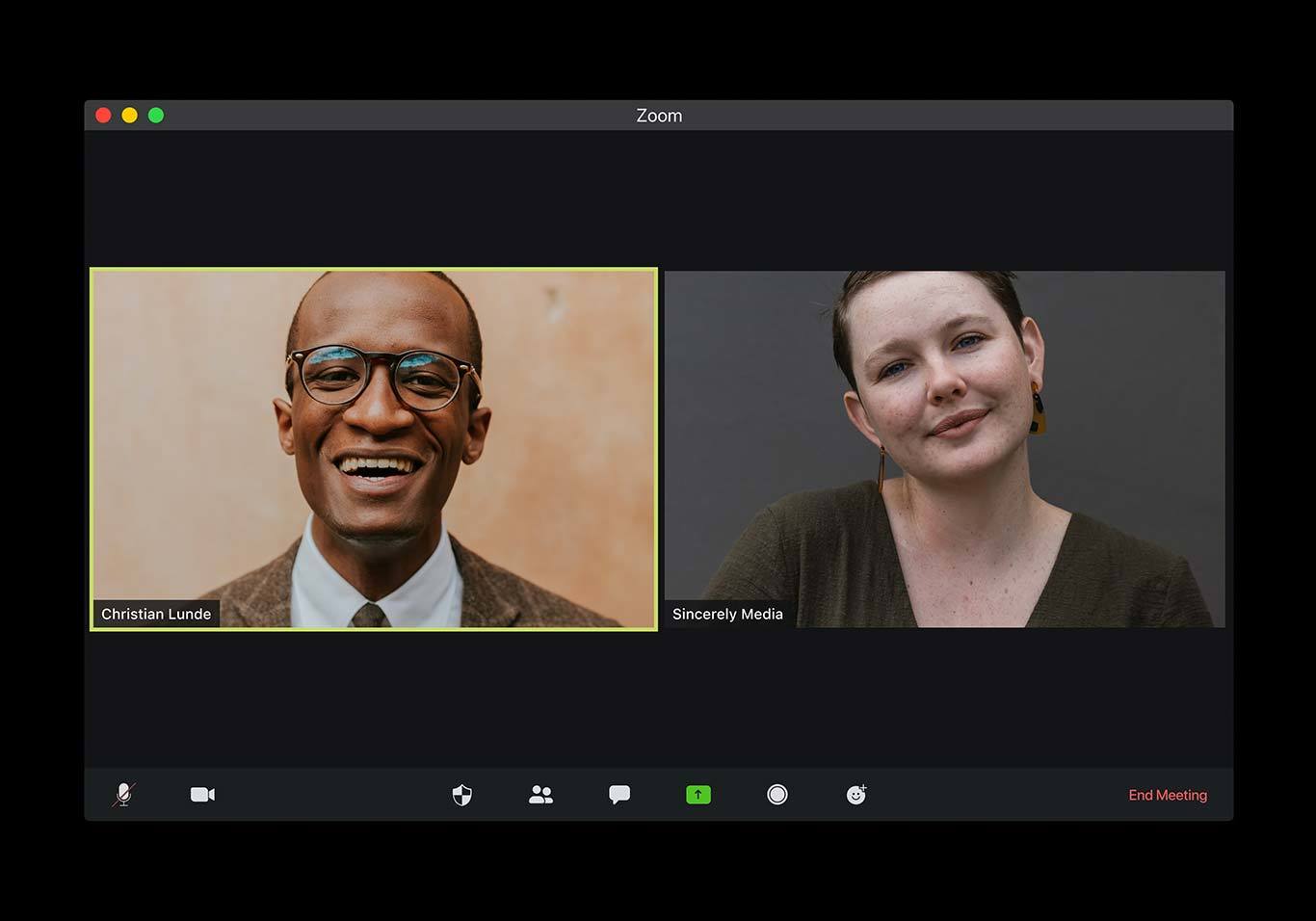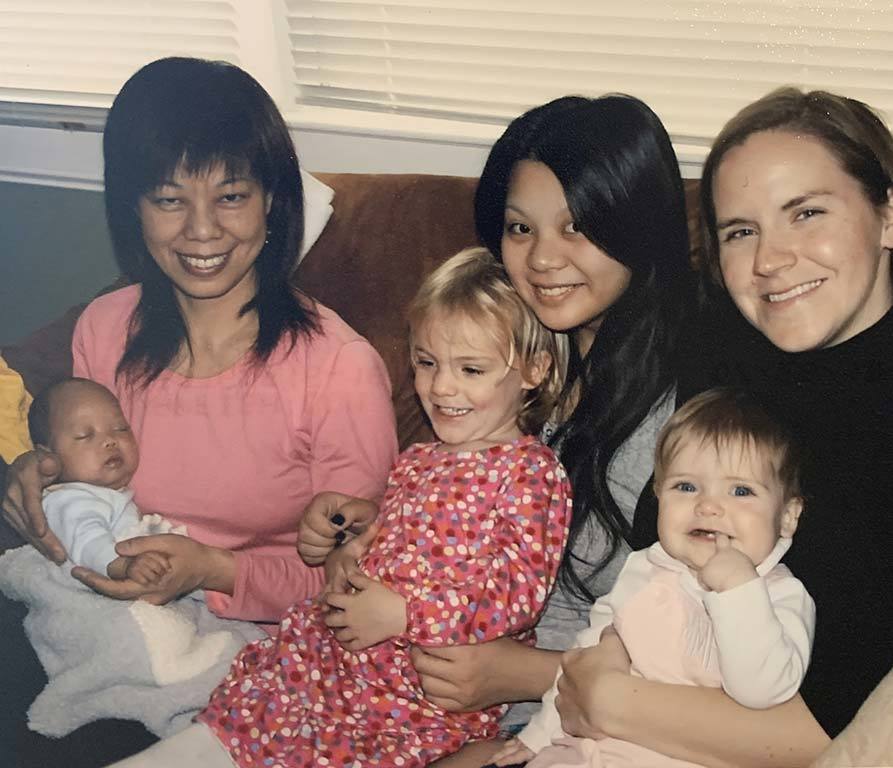Four Ways to Build Deeper Relationships through Technology - Flight or Flock
It's critical to take the time to name and celebrate the ways that you are being held, and are holding others, and to honor the tears you’ve shed together.

There is a wide spectrum of embodiment when it comes to attachment relationships. Assisting in a birth or feeding a toddler mashed peas are experiences of visceral, messy, and undoubtedly up-close-and-personal connections in which care is delivered through the full range of human senses. Squeezing a toddler’s sticky and chubby hand as she reaches out for contact is a full-sensory experience (and my personal favorite). Holding a woman’s hand while she ushers her new infant to its first breath in the world is a whole-heart-and-body experience that requires me to be as present and close as is humanly possible.
These experiences of touch and presence are fundamental to being human and I would not trade them for any amount of pre-COVID Zoom stock. And yet, as the internet has wrapped us up in more and more complex and far-reaching webs of connection, we have invented more and more convenient and creative forms of being together, platforms where we can hear, see, be, and even dance together without being in the same place at the same time. Throughout most of human history, we were either together or we were not. In the last twenty years, all of this has changed. In the last twenty days, we have completely left that old world behind. And so we are left with a paradox----we value and miss more than ever the “old” way of in-person closeness, even while we embrace the freedom to talk and connect in endlessly creative and barrier-eliminating ways. Certainly, this paradox has never been felt more deeply than in the current moment.
These experiences of touch and presence are fundamental to being human and I would not trade them for any amount of pre-COVID Zoom stock.
Intimate Relationships Can Happen Through Technology
In my roles as an adoptive parent, remote researcher, and online therapist, I have been forced to be an early adopter of “screen-heavy relationships.” For example, I use technological connection to faciIitate my son’s relationship with his birth family in China, to plan and execute research, to stay in touch with my closest friends, and to meet with clients all over the world.
While my hope is that these connections are also punctuated with in-person time together, this simply is not always my reality. I also, funnily enough, have experiences with sheltering in place during a health crisis. During the SARS outbreak in China in 2003, I happened to be living and teaching in China and was isolated with my husband in our apartment on a Chinese university campus for six weeks. During those weeks, we watched the world through our window. I’m not sure what else we did. This was pre-social media, even pre-Skype. How did we stay connected to our family and friends who were an ocean away? As I recall, our options for technological connection and entertainment were limited to email, prepaid international phone cards, and our extensive collection of pirated Chinese DVDs. As we could only afford international calls once a week, we wrote a lot of emails. Not surprisingly, about six weeks into isolation our students became restless which eventually led to a small uprising in which they set their dormitory furniture on fire and threw it out windows in protest. We, of course, watched with dismay through our window. No one was hurt, but the point was made.

My son Jack with his birth mother. We have used technology to stay in contact across physical and cultural distances.
We've created a practical guide to leading through teacher burnout
Check it outOne wonders if some combination of Zoom, WeChat, and TikTok could have prevented this rather extreme reaction, which was clearly the result of severe isolation.
In any case, shortly thereafter we were released from isolation and put on one of the last planes out of China back to the United States.
Maybe this experience explains why I more readily embrace attachment relationships across distances. In fact, as technology has made long-distance, intimate connection so much more feasible in the last two decades, I have found myself increasingly reliant on a community that spans far beyond my hometown. In order to stay connected through several major life and career moves, I have learned to rely on my voice and eye contact over and above the power of simply being in the same room at the same time. I have learned how to develop strong therapeutic relationships with clients 12 time zones away. I have maintained dear friendships across the Atlantic. And I have bonded with my current FuelEd team through relationships fostered almost completely online.
Four Easy Ways To Grow Relationships Through Technology
Given my expertise in attachment, and my lived experience with online attachment relationships, I wanted to share a few recommendations for building relationships online:
- Use eye contact to engage with others’ emotions through screens. Connection over screens can still bring you to tears and give you the chills. I have experienced this hundreds of times. Witnessing a client’s emotion or vulnerability, I am drawn into their experience and my body is able to engage with another’s emotion through the screen.
- Leverage technology to overcome previously insurmountable barriers. Technology sometimes creates a path for the vulnerable to engage. Many of my clients are isolated or homebound and unable to access in-person therapy. Technology has the power to remove previously insurmountable barriers or to bridge the distance between periods of in-person connection. For many, this is a cure for loneliness and sorrow.
- Be present in your interactions. Attuned and misattuned interactions can happen both online and in person. Your focused presence is still what matters most. A distracted and misattuned in-person interaction feels bad; so does a distracted and misattuned online interaction.
- Practice unconditional positive regard in your interactions as seeing and feeling can transcend physical connection. When it comes to human-to-human connections, unconditional love, attunement, and care are not excluded from screen-to-screen interactions. The power of being felt and seen can transcend physical connection when necessary.
Over the years I have met many skeptics of the possibility for intimate connection to happen through screens. As it turns out though, necessity (or COVID-19) is the mother of non-judgment, and many of these skeptics have been transformed in just a few short weeks by joyfully connecting with loved ones during this stressful time.
We’re realizing that it’s okay to long for and miss the in-the-room experience while also embracing a new reality.
The beautiful piece we can name now is that our widespread adoption of social distancing has unleashed unprecedented creativity in our efforts to bridge the distance between us.
Over the course of just two weeks, we have climbed over barriers that once felt insurmountable and embraced our togetherness in unexpected and beautiful ways. Our feeds are full of heartwarming posts about online birthday parties, Zoom therapy groups, and socially distanced backyard Zumba classes, complete with megaphones.
And as a community dedicated to educator well-being, one of our favorite expressions of togetherness at FuelEd are classes of children giggling together while their beloved teacher reads a story, bridging the distance through warm eye contact, a familiar voice, and her comforting words. The message:
“I am here for you, I can see and hear you even if I can’t touch you”. It's undeniably poignant and takes us back to our early selves, to times in our development where the desire to be close was all that mattered.
Relationships Through Technology Are About the Flock
In this unplanned (and at times frightening) natural experiment, we are confirming what we already knew: there is no such thing as just one person. We only exist in connection, in the experience of being seen, felt, and heard by other humans who care and who are, in a sense, looking for us (whether it be on Zoom, in Gchat, or via group text). Liesel Ebersöhn, a resilience researcher from South Africa, describes the foundation of resilience as flocking over flighting, the act of “huddling up” and valuing and communing with our collective selves in times of stress. In this view, when and how we dance, talk, and cry together is core to our sense of self, and even to our capacity for hope in trying times. Even though we’re desperate to hold one another, our eye contact sustains us. Even though we long to dance hand-and-hand, watching our grandkids perform Tik Tok dances is still an utter delight. Even though everything in us longs for the day when we can embrace again in person, in the meantime we are committing to not leaving one another alone in our fear, sorrow, or joy.
In this unprecedented time of upheaval I would like to suggest that the most powerful form of self-care is to laugh and cry together, even if through a screen. Take the time to name and celebrate the ways that you are being held in collective resilience, and to honor the tears you’ve shed together across enduring webs of connection. Your instincts have already kicked in and moved you toward what you need most: your flock.
The FuelEd Flock would love to hear stories of your educational community’s resilience during these times. What formation has your flock taken in these past few weeks? Join us to deepen your sense of belonging in the flock of educators we are pulling together at FuelEd. Register for the webinar below.
Bring FuelEd to your school, district, or organization
SCHEDULE A CALLExplore other articles
READ MOREAbout the author
Kelley Munger
PhD, LPC, NCC
Kelley holds a BA in English from Auburn University, an MA in Teaching from Lee University, and an MA in Counseling Psychology from Covenant Seminary. She completed her PhD in Early Intervention and Special Education at the University of Oregon in 2019. Kelley is a researcher and licensed therapist working in the areas of trauma, adult attachment, special education, and human development. She is passionate about leveraging the power of relationships to promote developmental flourishing across the lifespan.
Kelley holds a BA in English from Auburn University, an MA in Teaching from Lee University, and an MA in Counseling Psychology from Covenant Seminary. She completed her PhD in Early Intervention and Special Education at the University of Oregon in 2019. Kelley is a researcher and licensed therapist working in the areas of trauma, adult attachment, special education, and human development. She is passionate about leveraging the power of relationships to promote developmental flourishing across the lifespan.




